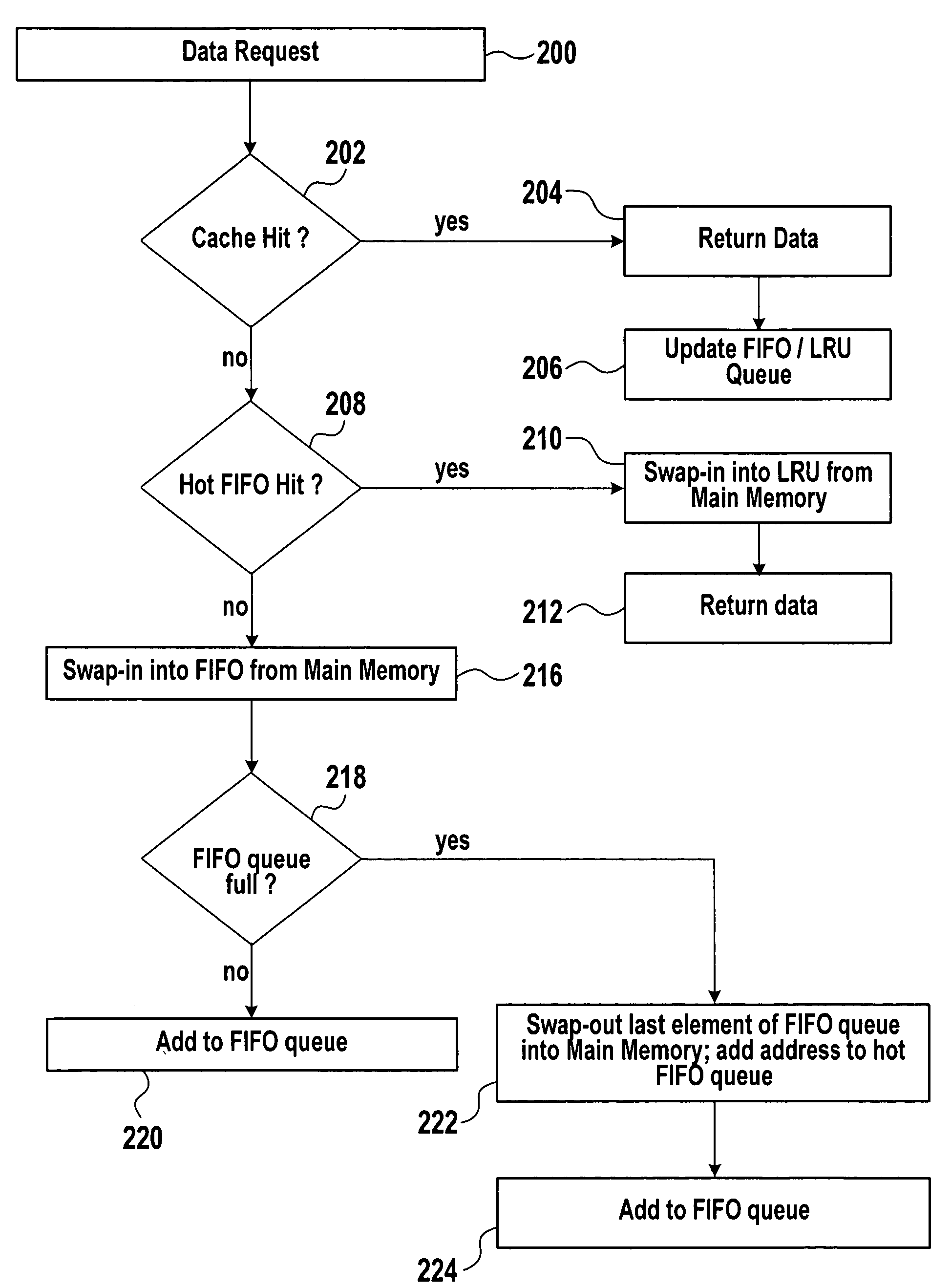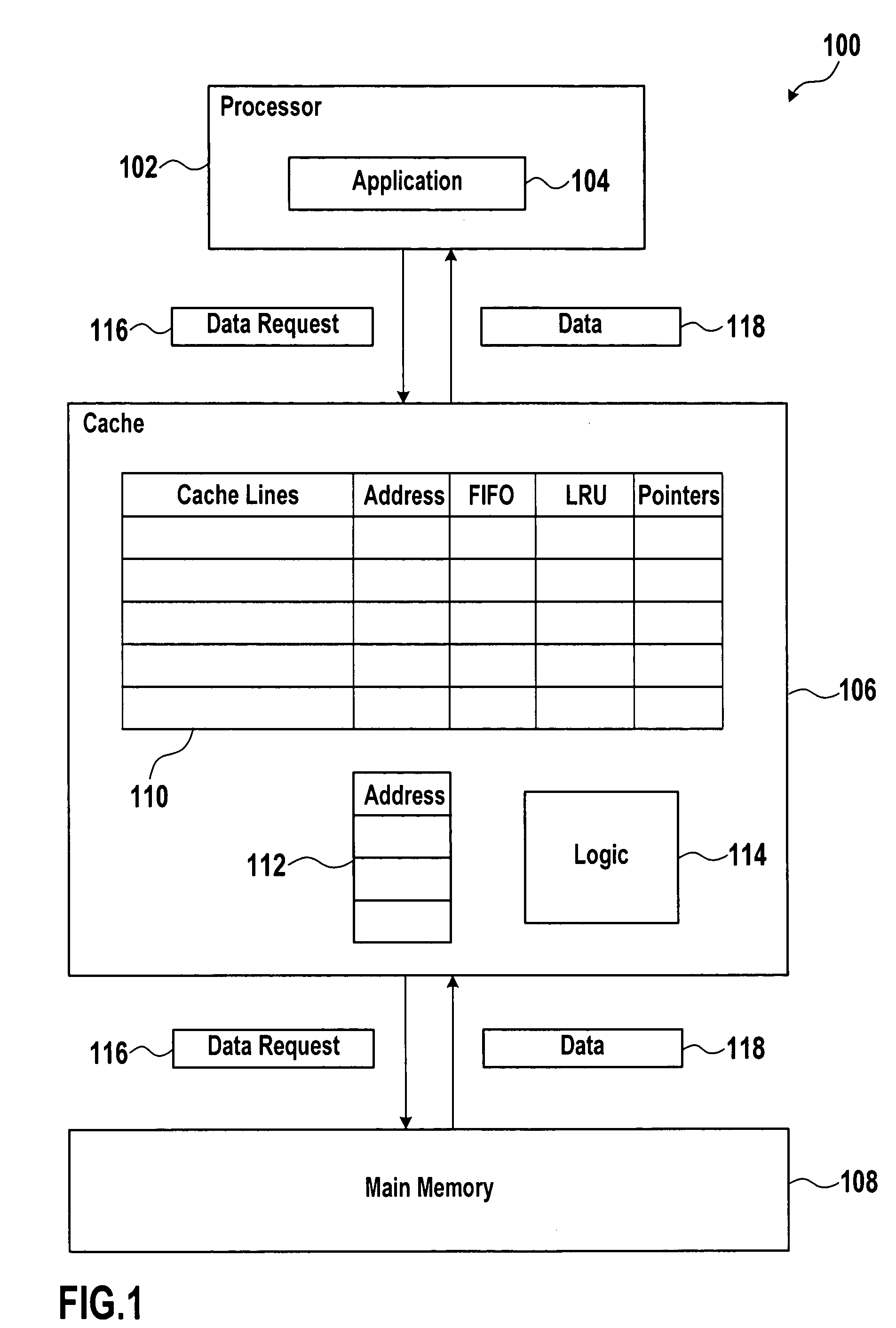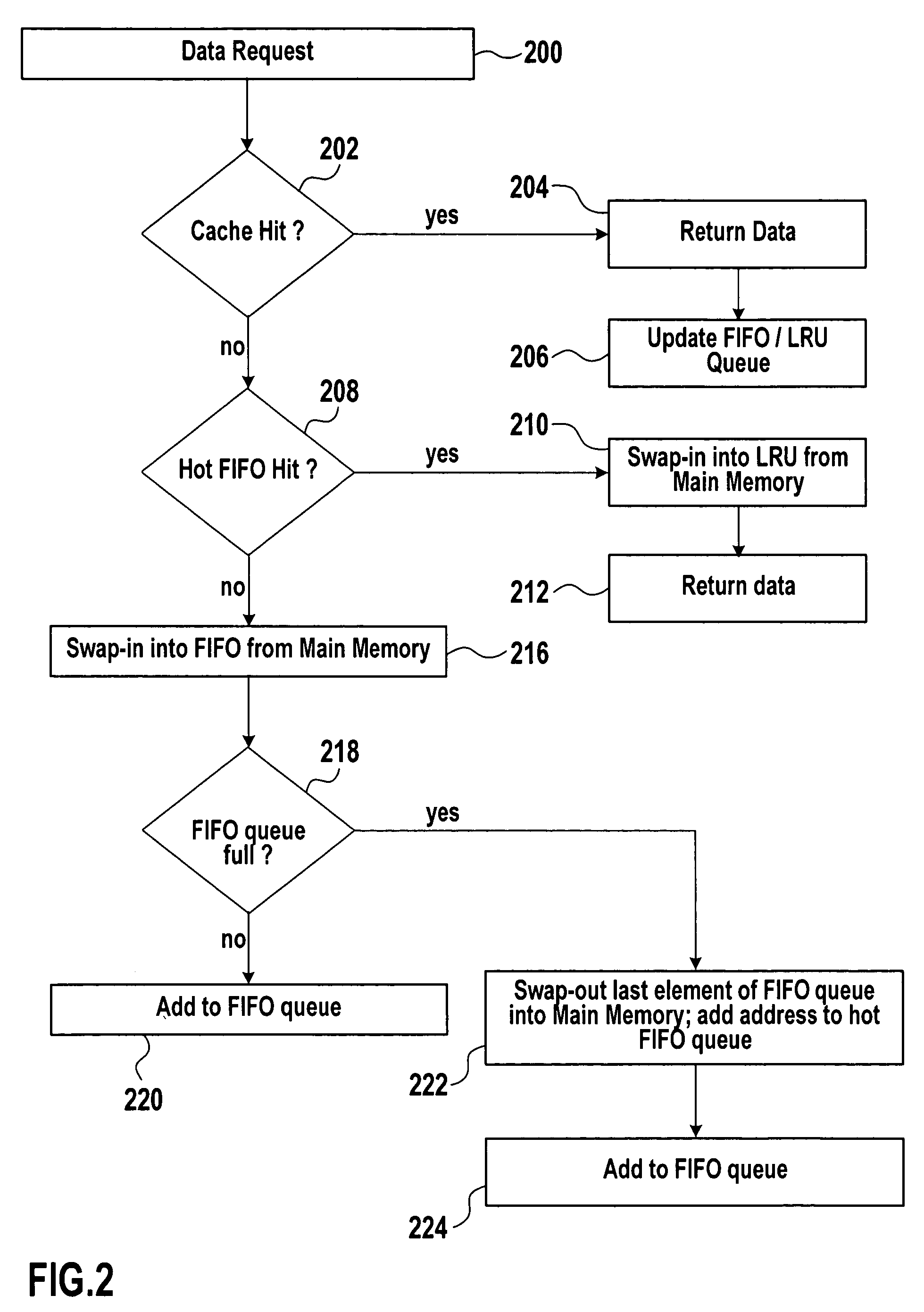Systems and methods for data caching
a data caching and data technology, applied in the field of data processing, can solve the problems of increasing the time required to search all tag fields (and/or the complexity of the search logic), affecting the overall performance of the data processing system, and affecting the hit rate of the cache.
- Summary
- Abstract
- Description
- Claims
- Application Information
AI Technical Summary
Benefits of technology
Problems solved by technology
Method used
Image
Examples
Embodiment Construction
[0001]1. Field of the Invention
[0002]The present invention generally relates to the field of data processing and, more particularly, to systems and methods for data caching.
[0003]2. Background Information
[0004]In the art of computing, cache memories are used to store portions of the memory contents of a main memory that are likely to be used soon. As used herein, the term “cache” will also be used to refer to a cache memory. Caches are typically smaller and faster than main memory, and are used to mask latencies involved in retrieving memory operands from main memory. In modern computer systems, cache access times are typically about 500% to 3000% faster than main memory access times.
[0005]An entry of a cache is known in the art as a cache line, and typically a cache line will store a small contiguous range of main memory contents, such as 32 or 64 bytes. While cache memories are not limited to CPUs, a primary application for cache memories is to store memory operands required by on...
PUM
 Login to View More
Login to View More Abstract
Description
Claims
Application Information
 Login to View More
Login to View More - R&D
- Intellectual Property
- Life Sciences
- Materials
- Tech Scout
- Unparalleled Data Quality
- Higher Quality Content
- 60% Fewer Hallucinations
Browse by: Latest US Patents, China's latest patents, Technical Efficacy Thesaurus, Application Domain, Technology Topic, Popular Technical Reports.
© 2025 PatSnap. All rights reserved.Legal|Privacy policy|Modern Slavery Act Transparency Statement|Sitemap|About US| Contact US: help@patsnap.com



